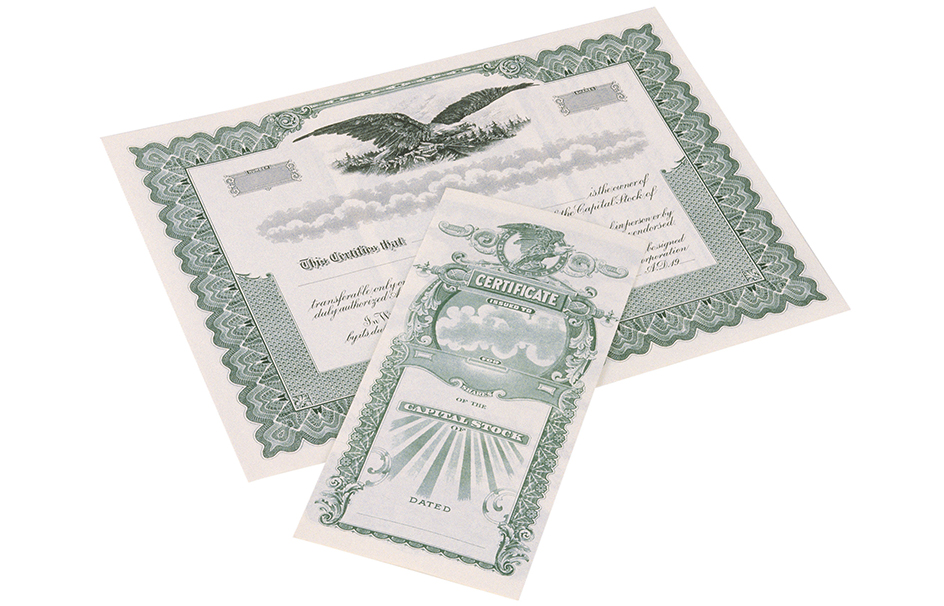Stock is a right of ownership in a corporation. The stock is divided into a certain number of shares, and the corporation issues stockholders one or more stock certificates to show how many shares they hold. The stockholders own the company and elect a board of directors to manage it for them.

Stockholders
may sell their stock whenever they want to, unless the corporation has some special rule to prevent it. Prices of stock change according to general business conditions and the earnings and future prospects of the company. If the business is doing well, stockholders may be able to sell their stock for a profit. If it is not, they may have to take a loss.
Large corporations may have many thousands of stockholders. Their stock is bought and sold in marketplaces called stock exchanges. When a sale is made, the seller signs the certificate. The buyer turns this over to the corporation and gets a new certificate.
When the corporation has made a profit, the directors may divide the profit among the stockholders as dividends, or they may decide to use it to expand the business. Dividends may be paid only out of the corporation’s profits. When profits are used to expand the business, the directors and stockholders may decide to issue more stock to show that there is more money invested in the business. This new stock will be divided among the stockholders as a stock dividend.
Kinds of stock.
The Articles of Incorporation—papers signed when the corporation is formed—may specify the different kinds of stock. Par stock must be issued for not less than a set price, called the par value, for each share. If the articles provide for no-par stock, the directors determine the issuing price of the stock and may change it whenever they wish.
All shares of stock have equal dividend and voting rights unless the articles provide differently. There may be different classes of stock, such as voting and nonvoting. Many articles provide for common and preferred stock. Preferred stock is entitled to a preference on dividends. That is, the directors must pay a certain amount —usually a percentage of par value—to the holders of preferred stock before they pay anything to the holders of common stock. If preferred stock holders share with common-stock holders in dividends beyond the percentage, the stock is called participating preferred.
Preferred stock may also be cumulative. That is, if there are no dividends given in a year, the preferred-stock holders must be given double their dividend the next year. This dividend is paid before anything is paid to the common-stock holders. It will continue to multiply for as many years as dividends are not paid.
When a corporation goes out of business, it divides its property among the stockholders. This process is called liquidation. When a company liquidates, the preferred-stock holders may be given the par value of their stock before the common-stock holders are given anything. This preferred stock is said to be preferred up to par on liquidation.
